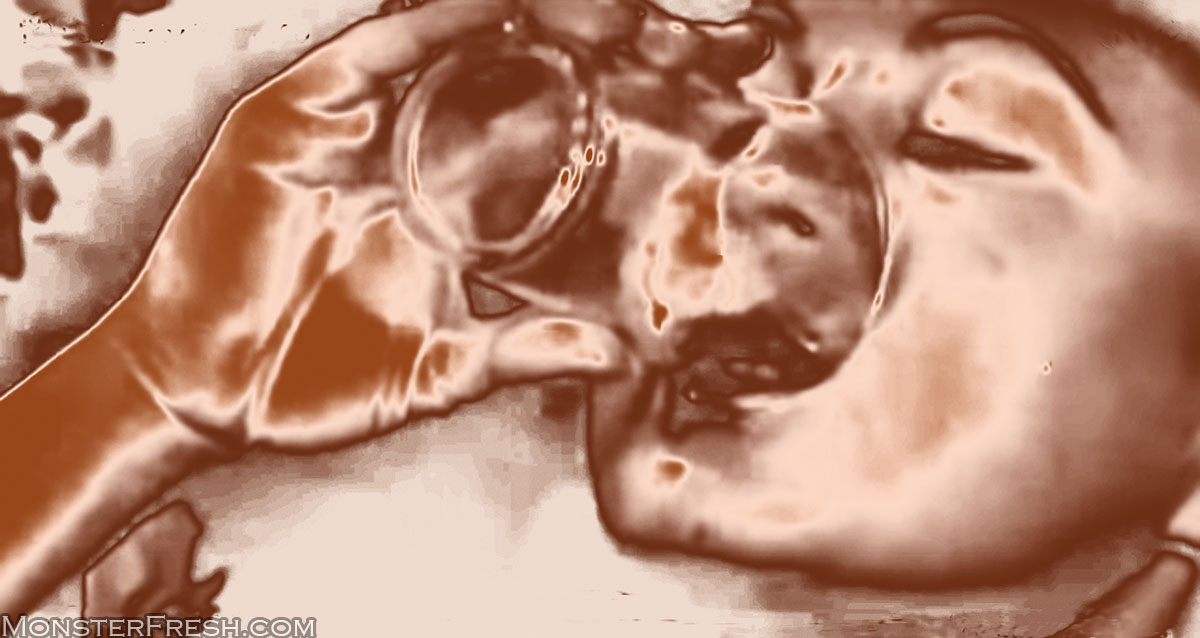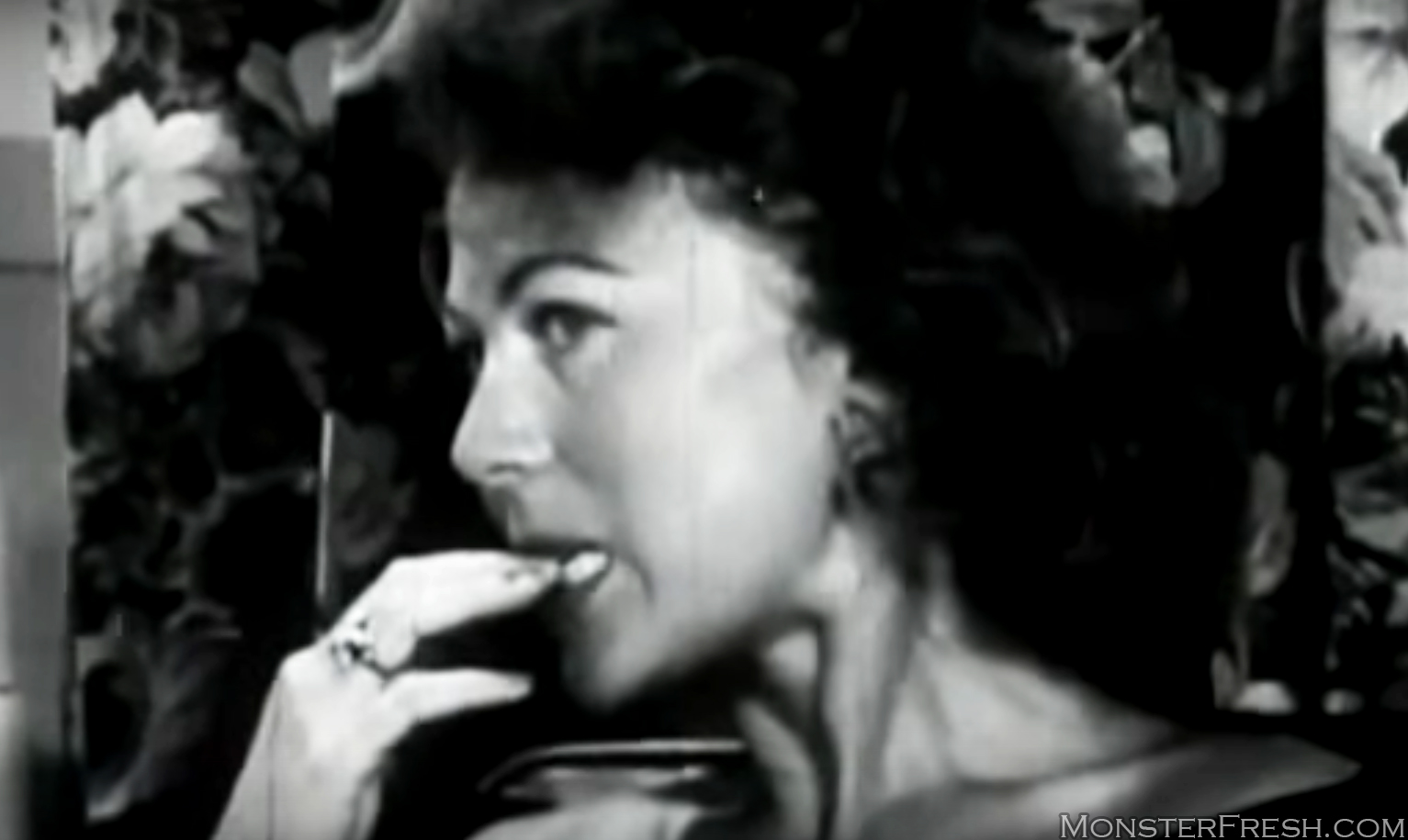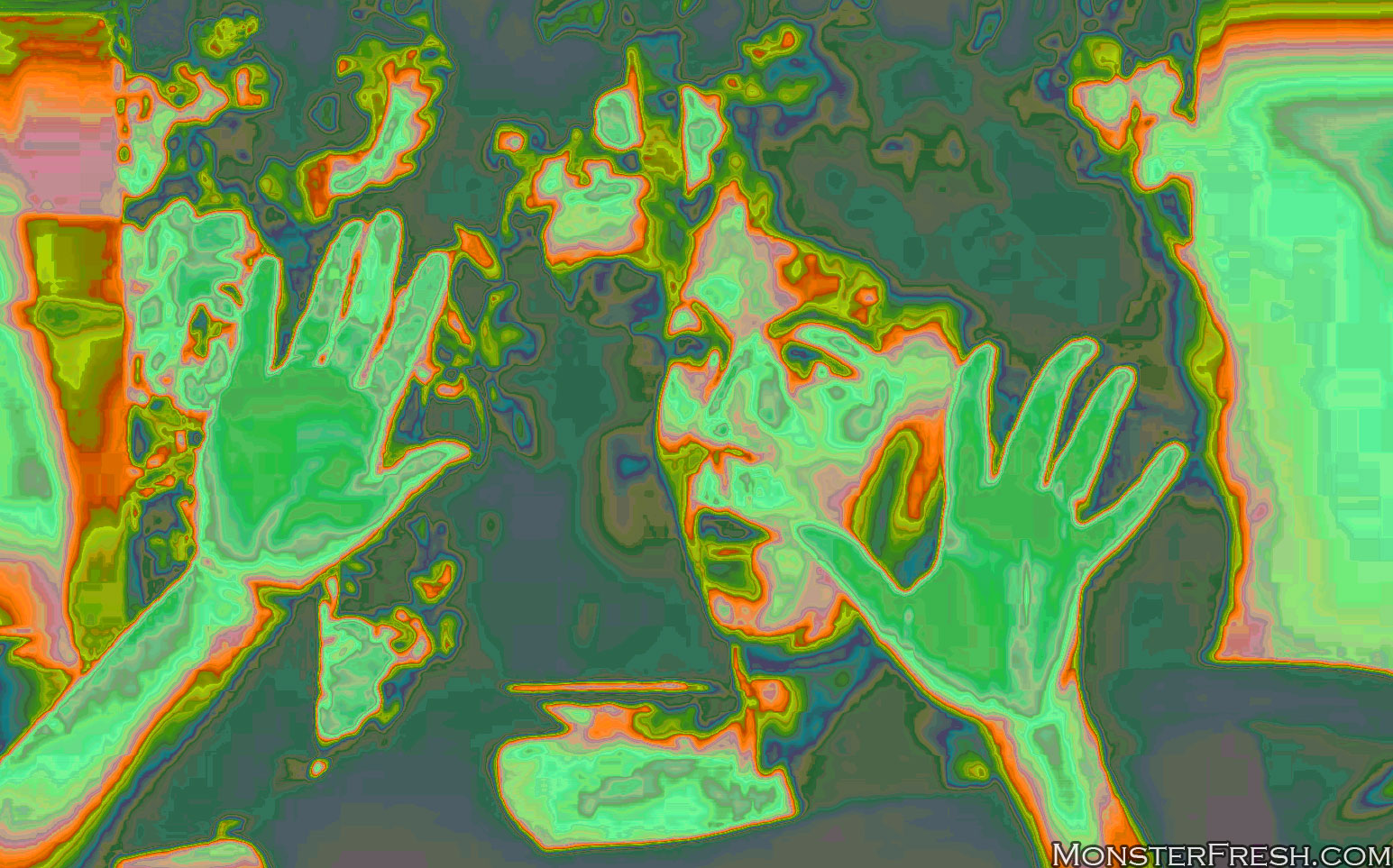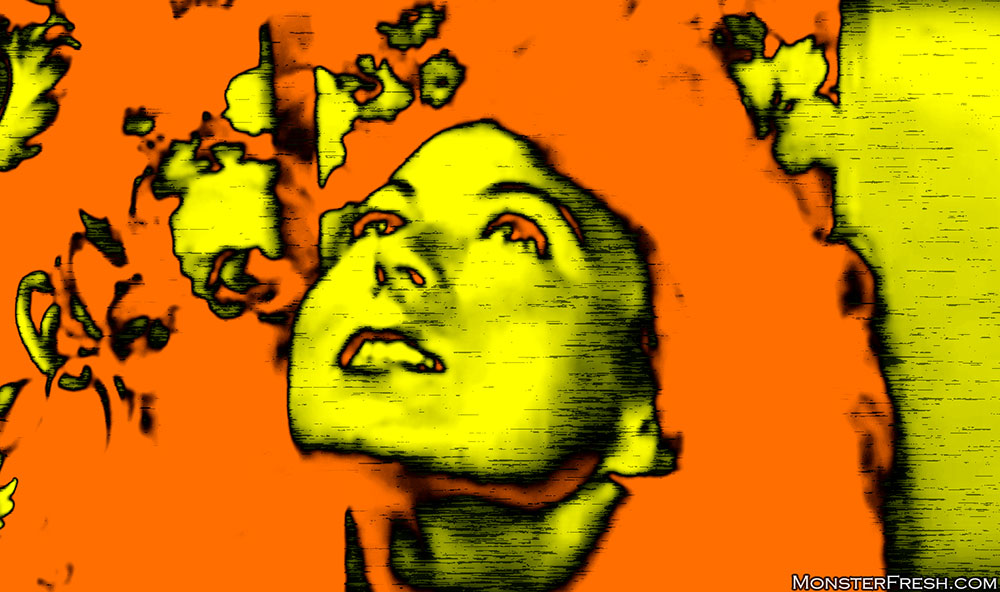Examining The Video “1950s Housewife On LSD”
Factoring in details about individuals involved, the era, & personal experience, here’s why we believe this footage is historically significant 6 decades later.

Looking through old drafts, I stumbled across this post which I meant to publish years ago. The good news is that the subject is timeless, both literally and figuratively, considering that time itself is a human construct, the subject of the video directly relates to human perceptions of reality, and the fact that the footage is from a good 60 years ago and remains as fascinating as the day it was recorded. Titled “1950’s Housewife on LSD” the content of said video is pretty self-explanatory and is a documentation of a “normal” mid-century housewife participating in one of the endless LSD experiments conducted by researchers throughout the decade. It wasn’t until 1959 that author/counter-culture icon, Ken Kesey (One Flew Over The Cuckoos Nest, Sometimes A Great Notion), while a student at Stanford University, would first volunteer for similar studies held at the Menlo Park veterans hospital, which were later revealed to be part of the infamous CIA funded mind control experiments under Project MKUltra. In Tom Wolfe‘s 1968 book, The Electric Kool-Aid Acid Test, which chronicles the head Merry Prankster‘s adventures involving the hallucinogen, including him sneaking it out from the research facility and distributing it to the public — first during his “acid test” parties with The Grateful Dead, before expanding as a major figure in a much broader movement — Kesey mentions how easy it was to fuck with the results of these studies, because those conducting them never ingested the substance themselves. One thing that he mentions, specifically, is them testing his perception of time, to which he could respond accurately by remembering how many times his heart should beat within a given minute or using similar tactics to circumvent providing them with honest data pertaining to his experience.
Those who have ever taken any decent amount of lysergic acid diethylamide know that, even if Kesey respected the researchers and their intentions and never made a concerted effort to sabotage their findings, the details of its effects can still be a difficult thing to fully describe to anyone who hasn’t experienced them for themselves — imagine trying to describe something as abstract as pain to someone who has no ability to sense it. The woman in the video expresses a similar sentiment when asked to relay her own experience, answering with, “I couldn’t possibly tell you” before attempting to do so anyway, and then reverting back to, “I don’t know how I could tell you.” Mostly, she mentions a “release” and feeling “free,” noting that “everything is in color.” She refers to an ability to see the air and “all the molecules,” while recognizing that she is one with everything. “Can’t you see it?,” she asks. Adding, “You have to see the air. You can’t believe it.” She may seem slightly puzzled by the fact that the doctor, Sidney Cohen, is unable to see what she can, but mostly finds it unbelievable what she’s able to experience herself. After mentioning “dimensions,” “prisms,” and “rays,” penetrating her being, she is asked what it all “means” to her and responds with, “I’ve never seen such infinite beauty in my life.” At one point, she expresses a wish that she was able to “talk in technicolor.‘ “I can’t tell you about it,” she tells Cohen. “If you can’t see it, then you’ll just never know it. I feel sorry for you.” Her empathy is sincere, but ends with what is half sigh/half laugh under her breath, finished off with a smirk, as if to say, “Tough break kid, but this is amazing.“
Everything about her account reflects some form of awakening, a greater awareness of self, if not also a breakthrough on a spiritual and/or intellectual level. With a distant gaze, she’s straddling her accepted role as psychedelic cosmonaut drifting off and sinking into the mesmerizing new dimension that’s exposing itself and unraveling before her, with the disruptive expectation to radio back to home base and report what she’s experiencing in real time. A difficult balance, she often responds by asking, “can’t you feel it?” when prodded. There are times when she seems compelled to discover a way to appease the doctor with the clearest answer, then blips where she’s unsure of herself that quickly shift to a knowing look that any attempt at explanation is futile and, perhaps, questioning if she should even be sure of her questioner. When expected to remain tethered to this more physical corporeal realm, her altered faculties and the limitations of human language leave her at an obvious disadvantage, but that’s like focusing on how someone can’t walk a straight line, because they’re too busy hovering above it — it’s a measurement of what impedes them, rather than on the remarkable abilities that they do possess, perhaps even due to that impedance. When questioned about if the experience is “pleasant” or unpleasant, she determines that “there isn’t any pleasant or unpleasant.” But, my favorite portion of the video is when she ultimately chooses her new LSD-induced perception over her “normal” previous one, concluding that “this is reality.”
THE VIDEO
GERALD HEARD
You’ll notice the added footage of author/historian, Gerald Heard chiming in about his own experiences and viewpoints after the housewife interview. This was a pleasant surprise for me, as the original version that I’d intended to post, along with a few others online, didn’t include that section with the philosopher and have since had the audio removed from them on Youtube. Heard was a colleague of author, Aldous Huxley (Brave New World, Doors Of Perception) whom he traveled alongside from Britain to California in 1937, where the two men founded Trabuco College [1942 to 1949], a retreat center focused on the exploration of comparative religion and the idea of conscious evolution. His appearance in the video isn’t simply the result of bringing in an outside intellectual’s perspective, Gerald was actually conducting ongoing experiments involving the administration of LSD to numerous patients, alongside psychiatrist Sidney Cohen. One such LSD test subject was Alcoholics Anonymous “co-founder,” Bill Wilson, who saw the potential use for the drug to assist select people in his program; specifically, with step 12, which refers to “spiritual awakening,” since the results could be achieved without the prerequisite for a member to be affiliated with any organized religion. In his segment, Heard reinforces such concepts as the perception of time commonly evaporating on lysergic acid, and that it’s “almost impossible” to describe the experience, stating that one can only describe what it isn’t, rather than define what it is. He explains that, while the experiences of individuals vary, most first time users confirm something to the effect of, “Well, I never knew anything like that in the whole of my life,” further emphasizing this unveiling of new inexplicable horizons that are without counterpart or precedent in the “normal” world. The most cryptic moment of his testimony comes when he mentions a conclusion that select patients have come to while on the drug, one which he himself has entertained before, while under its influence: “That’s what death is going to be like. And oh what fun it will be.” Based on the context, it’s clear that Heard is referring just as much to experiencing an ego death, while welcoming the idea of becoming integrated back into a larger collective consciousness and greater spiritual entity. “Suddenly, you notice that there aren’t these separations. That we’re not on a separate island shouting across to somebody else and trying to hear what they’re saying and misunderstanding them.” He speaks of the stimulation of empathy and the idea that we’re “part of a single continent” which”meets underneath the water.” He concludes by adding, “And with that [revelation] goes such delight; the sober certainty of waking bliss.” But, while I agree with the majority of his assessment, the truth of the matter is that not everyone will always interpret the experience of separating from your own finely crafted physical identity as “delight;” some just find it incredibly unpleasant and bug the fuck out… and hard.

The common belief is that, when an infant is first born, it rightly perceives everything else as merely an extension of themselves and, over time, through a series of interactions and experiences, which I assume include seeing mirror reflections of themselves and learning to operate their motor skills more fully, they gradually become self-aware and begin to view themselves as a unique separate entity unto themselves. This exchange of a more spiritual connection to the universe for an increasingly physical relationship within it is what we typically refer to as “development.” Not unlike developing a photograph, which begins with a blank sheet full of infinite possibilities, certain aspects are blocked out in varying degrees, so that what we register as something new manifesting out of nothingness is actually the result of elimination and reduction, a presentation of what is left after carving away everything that “it isn’t” from an initial foundation of everythingness. Every time that we “learn” or define something, we believe that we’ve acquired new knowledge, but more often than not, we are actually eliminating possibilities and closing our minds from entertaining outside potentialities. Once something is rigidly defined, a metaphorical gate is built around it restricting it from being almost anything else. For example, a chair is “a seat for one person,” that is until some ambitious soul challenges that definition by deciding to stand on it to change a light bulb, or uses it to smash out a storefront window. Likewise, the Western human child is generally trained to define itself throughout it’s life by “what it isn’t, it isn’t, it isn’t.” In essence, we form and define our individual identities by honing our physical senses and detaching from the greater universe at large, then spend the rest of our lives yearning and hunting for a way to reconnect with it via the very physical means that severed our ties from it, to begin with.
THE MIND AS FILTER
When I used to “experiment,” back in the day, the effects on me were always more of the “ego smashing,” brain re-wiring, intensely analytical sort, than an all-out visual trip out, but the housewife in the footage is clearly experiencing some sensory overload, or to be more scientific about it, she’s seeing some shit. In my experiences, I noticed a tendency for those who’d never tried hallucinogens to play the inquiring Dr Cohen role, while those who would ingest LSD semi-regularly often seemed expressly concerned with trying to condense the experience down to a simple, basic, general description that encapsulated everything, despite all of the complexities, nuance, and variables inherent in folding an individual’s mind inside out. I had a friend who proudly believed that he nailed it by telling people that, with acid, “everything is all of a sudden,” but that never really fully jived for me. Other discussions and interpretations came closer to the idea that Huxley presented of our typical human minds behaving like a dripping faucet, with the drug simply operating as a tool for cranking the tap wide open. In this theory, the mind is much less inhibited by the drug as it is an inhibitor itself for all of the potential stimuli around us. There is no focus without the bokeh. Without the ability to filter all of the stimuli around us, we’d be constantly reacting to everything from all directions. Our senses would be overwhelmed and our functionality, at least within the “civilized” world, would become hindered, at best.
This relates directly to that previous idea of our development, as well as the concept that not all things are fully translatable between worlds using standard means. Consider any time that you’ve ever heard someone speak a language that is foreign to you, but they toss your name or an English word or term that you do recognize into the mix. It’s just like a word search puzzle; you recognize the “real words” among the chaos and discard the rest of the surrounding letters as extraneous throwaway pieces of a jumbled mess. These sounds were defined as “real words” in your brain when you began learning language and muting the outside noises around them. The idea that the introduction of LSD kicks the training wheels off and short-circuits the restricters overlaps with aspects of schizophrenia, in regards to how one can be overwhelmed by sensory information, the altered processing of physical senses, the uncharacteristic effects of neurotransmitters, and, of course, hallucinations, etc. Then, there’s always the question of whether or not you’re really witnessing things that aren’t there, or simply uninhibited by the reliance on the 5 basic physical senses that you’ve been restricting yourself to — senses like proximal, eidetic imagery, vestibular and geogravimetric are rarely ever discussed or recognized on any sufficient level. Nobel prize-winning Danish physicist and philosopher, Niels Bohr — a man who has been credited with making “foundational contributions to understanding atomic structure and quantum theory” — has also been credited with stating that, “If quantum mechanics hasn’t profoundly shocked you, you haven’t understood it yet. Everything we call real is made of things that cannot be regarded as real.”
WHO’S THE HOUSEWIFE?

Apparently, when video of the LSD housewife first hit the web about 5 years ago, it gained the attention of CNN, who claims to have first attempted to employ their crack detective skills to unsuccessfully track down the subject — she’d easily be in her 80s or 90s, if alive at all — before searching for relatives (with absolutely no leads, mind you), and eventually, settling on contacting the man who uploaded it for a brief 5-minute interview segment. The uploader, a writer/religion reporter by the name of Don Lattin, explained that he’d come across the footage in the Gerald Heard archives, while doing research on the philosopher to be used for his well received biography/memoir hybrid, Distilled Spirits, which weaves the experiences of Heard, Huxley, and Wilson‘s work and intersecting lives together with Lattin‘s own battles and recovery from addiction. The video excerpt was taken from a 1950s documentary series called Focus On Sanity and, while the specific identity of the woman in the footage was never revealed, an earlier portion in the full version of the episode, apparently, did explain that she was a former teacher who left her job to raise her son and that they lived on a beach in Southern California. As she states herself in the clip, her involvement in the experiment came from the fact that her husband actually worked at the VA hospital where it takes place.
There has to be an endless number of videos and articles about people on LSD, but what makes this footage so particularly compelling is the time period in which it was captured and how the subject must have existed within that era. One notable aspect is how Dr Cohen is interacting with her, because there is no real condescension in his tone and questioning. The fact that he further speaks with Heard, a clear proponent of the drug who is also involved in the conduction of the experiment, reflects that they are running a study that values the response and perception of their subject beyond that of simply a hallucinating guinea pig. This was early in the LSD game and well before its usage was criminalized, so they are still approaching it with the belief that there is potential to expand the mind, not just distort it; to derive new insight, not just confuse the synapses. The CNN video segment is much different, of course, with News Room host, Brooke Baldwin — a person who clearly has little to no real experience or knowledge of her own with the drug — employing a dismissive tone to not-so-subtly trivialize everything about the studies to, of all people, an expert who was writing a research book about the subject. Also of note is the fact that Heard and Cohen were entering into these experiments with the intention of examining the potential spiritual, conscious, and psychological benefits for their patients, not for the purposes of exploiting them for military gain, as was the case with the CIA and Project MKUltra.
 The 1950s was the decade of wholesome family programming like The Adventures of Ozzie And Harriet, Leave It To Beaver, and The Donna Reed Show, as well as being a golden age for social guidance films warning our youth about critical, often peer influenced, societal “dangers” (deadly marijuana cigarettes, lapses in chivalry, the “sick disease” of homosexuality, etc). To imply that the expected role of a “housewife” during this time period was stringently defined would be more than an understatement. In fact, I can direct you to an article containing an excerpt from a 1950s home economics book that provides detailed guidelines about how a “proper” housewife should operate, which includes such helpful instructions as the importance of keeping up appearances (of oneself, the children, and the home), about “minimizing noise;” “don’t greet him with problems and complaints,” “have dinner ready,” and “let him talk first.” Since the test subject previously had a job as a school teacher, that may suggest that she did have some aspirations of her own outside of a domestic environment, but the fact that she walked away from that occupation shows that her duties at home triumphed in the end. Whether or not that decision was ultimately her preference or not is impossible to assume — in a way, being a caregiver could be considered a more direct and rewarding way to utilize her skill set — but as a man who stays home with my own child by choice, I know that fact doesn’t eliminate the emotional or spiritual need for an identity outside of that world, or I wouldn’t be posting this right now, and the role of a housewife in the 1950s was much more restrictive and confining than my own could ever be. To quote myself from a handful of paragraphs ago, “once something is rigidly defined, a metaphorical gate is built around it restricting it from being almost anything else.” The LSD generated the light bulb above the housewife’s head, one that she could climb out of and on top of her ego to reach for. The idea that the light bulb represents is throwing her ego through that storefront window.
The 1950s was the decade of wholesome family programming like The Adventures of Ozzie And Harriet, Leave It To Beaver, and The Donna Reed Show, as well as being a golden age for social guidance films warning our youth about critical, often peer influenced, societal “dangers” (deadly marijuana cigarettes, lapses in chivalry, the “sick disease” of homosexuality, etc). To imply that the expected role of a “housewife” during this time period was stringently defined would be more than an understatement. In fact, I can direct you to an article containing an excerpt from a 1950s home economics book that provides detailed guidelines about how a “proper” housewife should operate, which includes such helpful instructions as the importance of keeping up appearances (of oneself, the children, and the home), about “minimizing noise;” “don’t greet him with problems and complaints,” “have dinner ready,” and “let him talk first.” Since the test subject previously had a job as a school teacher, that may suggest that she did have some aspirations of her own outside of a domestic environment, but the fact that she walked away from that occupation shows that her duties at home triumphed in the end. Whether or not that decision was ultimately her preference or not is impossible to assume — in a way, being a caregiver could be considered a more direct and rewarding way to utilize her skill set — but as a man who stays home with my own child by choice, I know that fact doesn’t eliminate the emotional or spiritual need for an identity outside of that world, or I wouldn’t be posting this right now, and the role of a housewife in the 1950s was much more restrictive and confining than my own could ever be. To quote myself from a handful of paragraphs ago, “once something is rigidly defined, a metaphorical gate is built around it restricting it from being almost anything else.” The LSD generated the light bulb above the housewife’s head, one that she could climb out of and on top of her ego to reach for. The idea that the light bulb represents is throwing her ego through that storefront window.
COLLAPSE & REFORM
Like I said, everyone has their own description of the LSD experience, and my analogy was often that of throwing a giant parachute over the head of a toddler. The immediate reaction is to fight and twist frantically, tangling themselves up even more, while attempting to get out. Just like someone who’s on fire — and I’ve met people who were tripping that believed they were — thrashing about only makes things worse. The real solution if you’re swallowed by a sea of fabric (parachute fabric or the fabric of time and reality) would be to calm down and work your way out of that maze with logic, clearing a path by sifting through one section at a time, while advancing slowly toward the air and light. With LSD I would feel my synapses firing out of wack and welcomed the impending cerebral storm and chaos. As is often the case, working through that confusion would yield some new level of understanding. If Henry Adams was right, then “Chaos often breeds life, while order breeds habit,” and, as creatures of habit, it’s not a terrible idea to intermittently disrupt and examine the patterns that we find ourselves locked into, especially since a solid portion of what we accept as truth has often been fed to us by outside sources since birth. For this reason, Huxley believed that the hallucinogenic experience “would be extremely good for almost anybody with fixed ideas, with a great certainty about what’s what,” because it would expose them to a universe outside of the world they have “constructed.”

I never pretended that hallucinogens were pure as vitamins, or that I wasn’t introducing poison into my skull, but I also knew that there were already toxic elements within me and, if all went according to plan, maybe they would fuse together and, as the acid left my system, it would carry some of the bullshit along with it. Once I was good and infected and “disoriented,” it became a mixture of living in that space and slowly reorienting myself back into my standard 3 dimensions. Whether it’s viewed as a distortion of sensual reality and an impedance of clarity, or a restoration of it, where the physical senses were the obstacles themselves, it was the journey back, or rather “the trip,” itself that provided that ultimate clarity in the end. The armor corrodes and the exploding ego is atomized, so it’s a process of first magnetizing that spacedust back together and forming it into a basic skeleton. In reconnecting those scattered wires back into the neurotechnological patch bay they blasted out of like a game of Perfection, I’d often realize that these inputs had been mislabeled to begin with and would need to determine whether to simply put these cables back where they were and forget about it, or to tidy up around the dome a bit. At its core, this is the equivalent of taking something apart to see how it works, before putting it back together — while it’s open is the time to work in any modifications/”improvements.” This is you coming back into focus from the ether; a baptism in gelatin silver. These are the chemicals, the agitation, and the stop bath being thrown in your lap to figure out yourself for yourself and redevelop your own image as a more pure representation. Working from the negative, it can be easier to determine how much burning and dodging had been involved the first time around, as well as to assess how much or little may be required now.
We live in a backwards world, naturally forcing us to accept a lot, often blindly. What we consider reality is simply what we accept as such, so if we can align more with what we know to be truth at our cores and stop allowing so much to slip through unchecked, then we should be able to live in a more truthful reality; at least, theoretically. Obviously, this is all some “out there” existential hippie shit and I have a kid, just like the housewife, so I’m more interested in balance — it would be nice to feel less trapped by the stresses that accompany daily life, without drifting so far off into pretentious new age faux spirituality that I’m wallowing in my own filth with undeserved smugness, while allowing possums to raise my son for me; sparkles shimmering in the mind, 6-inch yellowed toenails cracking on the feet. There’s always a risk of slipping too far out of one’s head (or too far into it), but so much of our world can be dependent on presentation that is in direct conflict with our natural selves. Live your life like a 1950s Home Ec text book and slap on a smile while you die inside. The ego isn’t necessarily synonymous with an individual’s own pride in all situations; sometimes the shell doesn’t prop the wounded spirit up, but suffocates it so that your power doesn’t uncomfortably challenge the pride of those that are running thangz. That’s why when the shell slips off, some of the more basic revelations accompanying a hallucinogenic state can be questioning things like, “Why do some have so much, while others have so little?,” or simple acknowledgments like the fact that everything from your clothing to your “interests” may not really be anything that you connect with on a deeper authentic level, but are simply components of an identity you’ve cobbled together based on hints and suggestions of what is expected of you and/or would serve you best in this society, by this society. It’s outward-in, rather than inward-out; environments affecting us, more than the reverse. Our identities define us, they are supposed to reflect our unique individual natures, yet we taper them, concerned about how they might disrupt the perceptions of others; others who are, most likely, operating the exact same way. We are conditioned to perpetuate this system and exist, although not necessarily thrive, within it.
NORMALITY = ABNORMALITY – CORE STRENGTH

Before my son was born, I thought about what the most important thing for him to know might be, if he never learned anything else. My conclusion was that it was imperative that he understood that, if the world ever seemed like a crazy upside down place, then his assessment was absolutely correct and that the problem was elsewhere and not with him. I wanted him to feel safe, but I also wanted him to be aware that, as his papa, I still don’t even know what the fuck is going on myself and don’t ever really expect to entirely. I wanted, and still want, him to know that we are all kind of winging it to a certain degree, but that it’s okay, because I believe that that reality is one of the greatest and most hidden secrets of the universe, and that being convinced of anything different has the potential to affect everything from our self esteem to our self respect.
I’d love to know what was on that normality test that Dr Sidney Cohen gave to our heroine. Her reaction to receiving the results that she “hoped” for reflected a bit of relief; of course, that only means that part of her was concerned. This also demonstrates why the housewife made the perfect subject, her concern toward her “normality” being just as important as the results themselves. It was that concern, that self doubt, that the acid burned away, while everything that she’d been suppressing for so long was released, engulfing her in miniature cyclones of iridescent mist. Some, like the CNN host, won’t ever be able to get beyond the novelty of June Cleaver tripping balls, but the test subject’s position in life didn’t make her an unorthodox choice, it actually made her an ideal candidate. With her rigidly defined role, she lived in a world epitomized by the “fixed ideas” of “what’s what” that Huxley spoke about, as much as anyone. Likewise, the 1950s really isn’t such an absurd or hilarious time to imagine people eating LSD based on the assumption that in such times they couldn’t fully grasp what they were fucking with, but rather the perfect time for people to be dispensing and experimenting with the drug for the exact reason that they were studying the scope of that potential. Hallucinogenic experimentation and the wholesome Fifties aren’t simply disparate, conflicting worlds colliding and bizarrely overlapping; instead, it was that very sort of repressive, cookie cutter society promoted at the time that created a need for such a substance and exploration, and it’s what helped to trigger the consciousness movement that was already well underway. If it all seems out of place, it’s because these were reactions to what was happening; reflections of a reaction to a reflection. It was this world that eventually gave way to the 60s, and it was this very world that our housewife existed within.

For me, the value in the interview footage is the beauty of seeing her seeing herself; a presumably obedient housewife, a “normal” woman in a severely underappreciated role, being encouraged to fully recognize her own power, perhaps for the first time ever. Just as the text book suggested, the role of the housewife was a role that held the entire fabric of society together, delusions and all — especially, the delusions. The occupational equivalent of adhesive binding together an otherwise shattered relic, it was her subordinate position that allowed (white) men to buy into their own ideas of themselves as virile, mentally superior, important figures achieving great things, just as she symbolized family values and wholesomeness in a post-World War II/pre-civil rights society that was only just stepping out of Jim Crow laws in the south, with racism against Asian immigrants historically prominent in California, where she resided and had this strange liquid administered to her. The civil rights and women’s liberation movements would eventually help to disrupt and upend large aspects of this culture, just as knowledge of and respect for oneself have always presented and always will present a threat to any structure built on oppression and the dominance of one group over another. But even if it didn’t click in the housewife’s brain on a level this deeply specific or literal, she still saw something beyond what she was supposed to and I wonder if/how it changed her and for how long.
I wonder if this was her only test at the VA hospital, whether or not she was ever asked to participate in a follow up and, if so, whether she enthusiastically returned, fearfully avoided it, or even if she was discouraged from doing so, because of her spouse’s own concerns about “changes” he’d noticed in her after the first experiment was conducted. Any number of paths could have been taken from absolutely no deviation at all from her typical life to her straight up walking out on her family. She could have burned down their home, gone back to school, or her husband may have even begun experimenting with hallucinogens himself, resulting in the whole family, ultimately, abandoning all of their Earthly possessions to live in a commune. I, obviously, didn’t know the housewife or her husband, I’m only aware of a few random aspects of historical significance pertaining to the time period, along with the fact that she was considered a “normal” citizen for that time period, which is a diagnosis that she seemed to find some small amount of comfort in. So, I do wonder what was on that normality test. I wonder what direction she went on to take in life, and I wonder what she may have told her own son about the world. I wonder if the experiment/experience changed her, I wonder how it may have changed her, and I wonder if the only significant difference from the day this footage was filmed from every day afterward was that she simply held a little secret inside of herself. Not to assume that her life wasn’t full before, but I hope that smirking inner truth made her existence not only more bearable, but even a little more fascinating again. Perhaps just knowing that it isn’t abnormal to feel abnormal became her new comfort. If so, maybe that was enough.